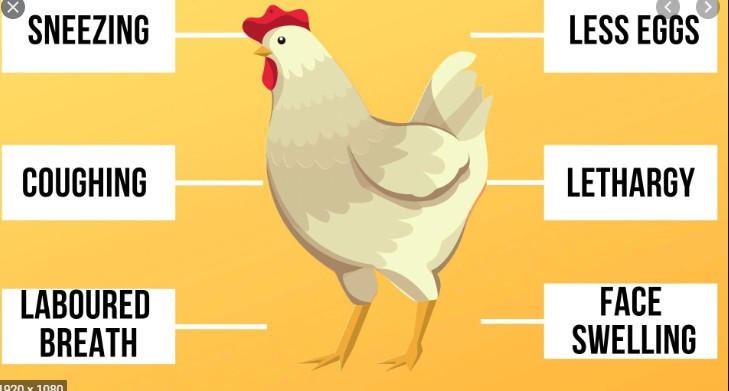Nobody likes to see their birds suffering from a respiratory disease. The occurrence and intensity of the disease depend on many factors like management, overhead ventilation, housing structure, and environmental conditions. Every poultry farmer wants to know: what is the best treatment for CRD in poultry? The answer depends on better understanding of the causative agent, transmission routes, and clinical signs of the disease.
What Is The Best Treatment For Crd In Poultry
When a chicken has been diagnosed with CRD, the best treatment for CRD is to prevent further infection. This can be done through vaccination against Marek’s disease. Vaccination is recommended for chickens that are at least 18 weeks old and have no signs of the disease.
Antibiotic therapy may also be used in conjunction with vaccination if your flock has not been vaccinated against or exposed to this virus. Antibiotics act as an immunostimulant, which helps fight off bacteria that cause CRD infections in chickens.
Supportive therapy includes providing vitamins and minerals that have been shown to aid in healthy growth and development of young chicks infected with Marek’s Disease Virus (MDV). Therapeutic diets are also available as supportive care options for poultry suffering from MDV infections; however, it is important to note that not all therapeutic diets will work equally well across all breeds or species so it is crucial that you consult your veterinarian before using one of these products on your farm
What is CRD
CRD is caused by a bacteria called Clostridium perfringens. This bacterium produces toxins which cause the disease to develop in chickens.
When C. perfringens enters the digestive tract of a chicken, it causes diarrhea and abdominal pain. The bacteria then multiply within the intestines and produce toxin that can cause death within days if left untreated.
Causative organism of CRD
The causative organism of CRD is bacteria. The bacteria that cause CRD in poultry include:
- Pasteurella multocida type D and E
- Mannheimia haemolytica serotype A1 and A2
best treatment for crd in poultry farm
When it comes to treatment, there are a few options:
- Vaccination. Vaccination is the first step in preventing disease and is one of the best ways to treat crd. A vaccine will help your birds fight off infection when they’re exposed to it, but it won’t do much if they already have the virus. You can vaccinate poultry against several strains of Marek’s disease at once or separately, depending on what you need most at that time (i.e., if you want them to be protected from multiple viruses).
- Antibiotic therapy. When you administer antibiotics, they kill off any bacteria (including viruses) in your birds’ bodies so they can recover more quickly from infections like Marek’s disease by clearing out all those bad bugs!
- Supportive therapy: This type of treatment focuses on helping poultry deal with an existing condition rather than treating an illness itself; for example, supportive therapy would include giving medication for pain relief after an injury has occurred or providing special diets for specific health problems such as weight loss due to lack of appetite caused by fear during times when predators like hawks might come around outside where chickens live freely outside without fences around their coops/pens 🙂
1. Vaccination
The best treatment for CRD is vaccination. Vaccination is a preventative measure that can help to reduce the risk of your birds getting infected by this disease. The chicken vaccine is administered by injection and it contains live, non-pathogenic avian influenza viruses that are adapted to the production of antibodies in poultry without causing clinical signs of infection.
It’s important to note that the vaccine does not provide 100% protection against Chicken Infectious Bronchitis (CIB). However, it does reduce the severity and duration of an outbreak if your chickens get infected with CIB virus after vaccination.
2. Antibiotic therapy
Antibiotics are used to treat bacterial infections, but not viral, fungal or parasitic ones. This means that antibiotics are ineffective against CRD in poultry as it is caused by a virus and not a bacteria (see here to learn more about the different types of infections).
3. Supportive therapy
Supportive therapy is the treatment of the symptoms of a disease and does not affect the cause. In this case, supportive therapy can include pain relief, controlling inflammation, and preventing infection.
4. Therapeutic diet
Another effective treatment for CRD is the therapeutic diet. This special feed is formulated to help the poultry recover. Therapeutic diets contain high levels of vitamins, minerals and amino acids that aid in aiding recovery from CRD.
Therapeutic diets are used in combination with antibiotics and are commonly used in commercial operations to treat severe infections.
The best treatment for crd in poultry is to give the birds good quality food, keep them warm and well fed. The best treatment for CRD in poultry farm can be done by using antibiotics therapy. If you want more information about the best treatment for crd in poultry farm, then please contact us now. We can give you all details regarding this disease including its symptoms and prevention methods. You may also find our articles helpful on how to prevent this disease from happening again
